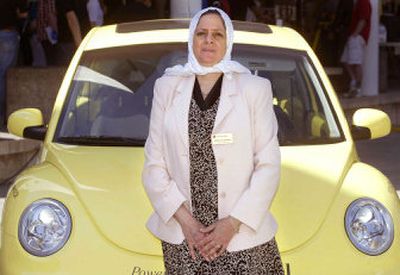New dean puts Idaho on the map

BOISE – There aren’t many female engineering deans in the United States – less than two dozen by one count. Starting this summer, two of those deans will be working in Idaho, an unlikely vanguard for women in science.
“Idaho is often not looked at as a state that would be taking a lead in some area like this,” said Martin Peterson, a spokesman for the University of Idaho, where Aicha Elshabini starts work in June as the dean of the College of Engineering.
Elshabini joins Cheryl Schrader, dean of engineering at Boise State University, who has been in her position for three years. And a few miles away from Elshabini’s new campus is Candis Claiborn, who started in March as dean of the Washington State University School of Engineering and Architecture in Pullman, Wash.
Female engineering deans – and female deans in a host of other scientific areas – are unusual, said Judy Vance, a mechanical engineering professor and chairwoman of the Department of Mechanical Engineering at Iowa State University in Ames, Iowa. Vance, a founder of the Women in Engineering Leadership Institute at Iowa State, counted about 20 female engineering deans in the country’s more than 300 engineering colleges. Another, Dr. Christina Amon, was due to start at the University of Toronto in July.
Academics and others have been trying to figure out for years why there aren’t more women in high-level university science jobs. Women have entered other demanding careers; they now make up more than half the medical students in the United States, according to the American Medical Association. But studies show women are still staying away from areas like engineering, a field with a heavy emphasis on math and science that teaches the practical application of science to commerce and industry.
“It’s just not a career path that’s being chosen by women,” said Vance. “Girls get steered away from engineering. It’s just not in our culture.”
The key is to attract girls’ interest early, said Elshabini, who excelled in math and science early on as she grew up in Cairo.
“You really need to talk to the young ladies in middle school about engineering,” said Elshabini, who is leaving a position as head of the electrical engineering department at the University of Arkansas. “When we wait until high school, the mind is already set on no engineering, because of the stress on physics, science and math.”’
Academics and interest groups are trying to get more women into high-level science positions. Universities need more women faculty and leaders to show women students the way, said Vance.
“I went through school without having a woman teacher,” she said. All of society benefits, she added, because engineers create products and services that will be used by all.
“One of the reasons your minivan has doors on both sides is because there was a woman on the design team who said, ‘I don’t want to keep walking around to the other side when I want to get my children out,’ ” said Vance.
Conservative Idaho, with its population of 1.4 million, might sound like an unlikely place to hold the distinction of being one of the few states in the country with two female engineering deans (California has three, according to Vance’s group).
But the Idaho Legislature has 27 percent female membership this year – higher than the national average of 23 percent, according to the Center for American Women and Politics at the State University of New Jersey in Rutgers, N.J. It’s had two women – Republican Helen Chenoweth and Democrat Gracie Bowers Pfost – elected to Congress, which is more than some larger states can claim; five states have never sent a woman to Congress at all.
In fact, Idaho’s a logical place to have two women engineering deans, said Schrader.
“I believe it has to do with the Western culture,” said Schrader, who grew up in Batavia, Ill. “There’s an entrepreneurial spirit.”
“It’s this sort of Western, I think, ability to not be so traditional in the way they do things,” said Sona Andrews, the BSU provost.
Schrader noted that Idaho was one of the first states to pass a law giving women the right to vote, with a referendum approved in 1896 – well before the United States ratified the constitutional amendment for women’s suffrage in 1920.